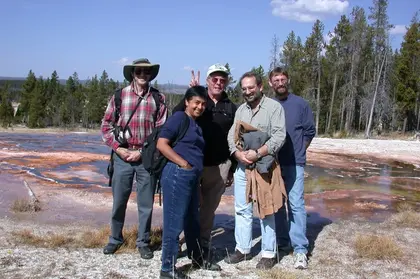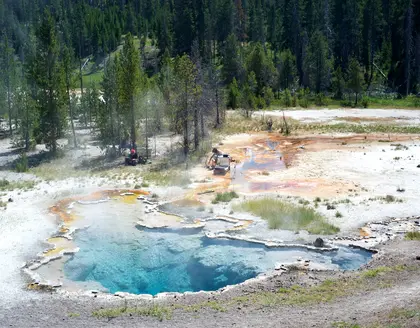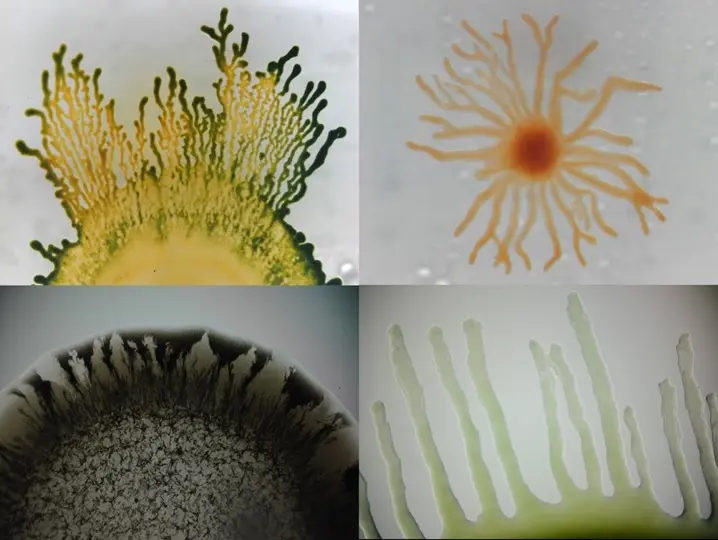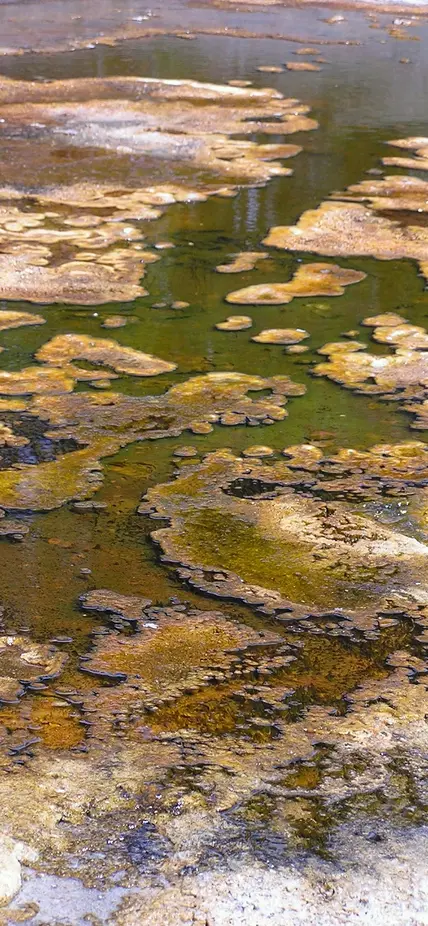Carnegie scientist Devaki Bhaya’s curiosity about how ancient microbial communities have adapted to the harsh conditions of Yellowstone National Park’s thermal springs set her on a winding path that led to one of the hottest topics in biology right now—'omics.

‘Omics’ is the collective effort to identify, characterize, and quantify groups of biomolecules within a cell or in a community and to understand their contributions to the complex physiology of the organism or to dynamic group interactions. It represents the intersection of a variety of specialties, including genomics, proteomics, metabolomics. In many ways, it leapfrogs over the classical methods of microbiology and takes what is called a “systems approach,” Bhaya explained.
Her ‘omics journey started with a simple question: why some individuals within a bacterial community are adapted to thrive at 70 degrees Celsius and others at 50 degrees Celsius, representing a very large temperature range for organisms that otherwise seem almost identical.
She and her colleagues—including Carnegie’s Arthur Grossman—received funding from a NSF-Frontiers in Integrative Biological Research program to solve the mystery. As part of this effort, they sequenced the genomes of both sets of microbes. They were surprised to find that although the genomes look very much alike in terms of their content, their organization was, as Bhaya described it, “completely scrambled.”
This turned out to be due to bacteria’s ability to move genes around and to transfer genes between individuals, regardless of how closely related they may or may not be.
“In bacteria, you can just transfer whole chunks of functionality between organisms. This was most striking in their ability to fix atmospheric nitrogen—very important in hot springs where there are almost no nutrients and every little gain in terms of being able to eke out an existence helps,” Bhaya explained.
It’s like loaning a cup of sugar to your neighbor, but instead of merely helping to complete a batch of cookies, the favor increases your neighbor’s chances of survival in difficult environmental conditions.

“So, we wondered if we could quantify these gene transfer or recombination events by starting to look at whole populations,” Bhaya said. “And we got this idea to try to obtain a large-scale meta-genomics view of what’s going on by partnering with the DOE Joint Genomics Institute. We obtained a wealth of data on the genes that are present and actively being transcribed into protein by RNA, as well as the viral genomes represented in the community. And that’s where it got really interesting for me, because that’s not the sort of question I normally thought about before this.”
This kind of massive dataset enables scientists to obtain a 30,000-foot view on what’s going on in the hot springs across temperature gradients over time, which they published in Science in 2015. And this rich trove of information is useful not just to Bhaya and her collaborators, but accessible to other scientists who are investigating entirely different questions.
For example, the metagenomics information gathered from Bhaya’s Yellowstone hot springs microbial communities underpinned recent work led by other teams that was published in Nature—characterizing the diversity of unknown proteins or “functional dark matter” found in these datasets—and Cell—defining the diversity of viruses that prey on bacteria in these microbial ecosystems.
Thanks to these collaborations, Bhaya and her lab have taken on new approaches to their work, including adding research on the role of viruses infecting extremophiles to their repertoire.

“I could have stuck to working with cyanobacteria and been content,” Bhaya said. “But this overwhelming richness of information was just too much to pass up. We generate gigabytes of sequence data and use maybe 1 percent. Each one of these datasets has avenues of investigation opening up for everybody. And, and so I feel like it's really a new way of thinking about biology.”
“The ‘omics approach has changed how people think about sharing their data and about biology as a more communal field of research,” Bhaya added.
Looking ahead, she is keen to link her work on extremophiles like the hot spring microbes she studies with the origins of life research undertaken by astrobiologists and geomicrobiologists. She also recently started collaborating with Carnegie alumnus Andrew Fire, a Nobel Prize laureate, on RNA viruses. She is also developing a synthetic biology program at Carnegie that she believes will enhance her ongoing work in natural communities and harmful algal blooms.
“What I foresee in the next 10 or 15 years is a big focus on how populations behave and on building models that can represent whole communities,” Bhaya concluded. “Of course, none of the understanding that we are able to glean from these big ‘omics datasets’ would be possible if we didn’t have that strong foundation of biochemistry and molecular biology to build it upon, so the fundamentals are still very important.”

